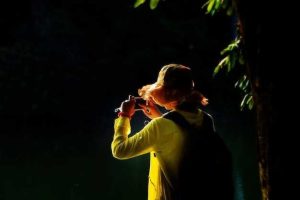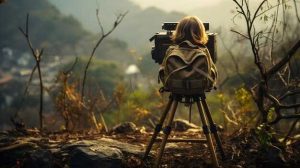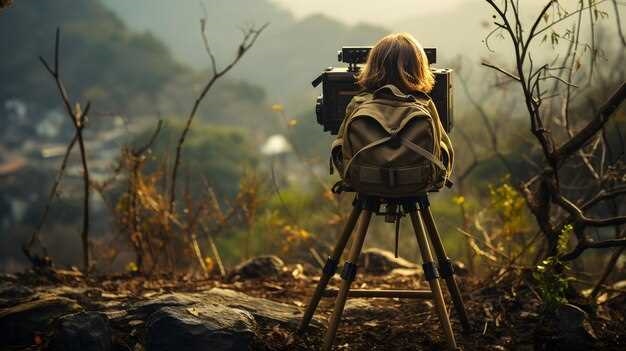
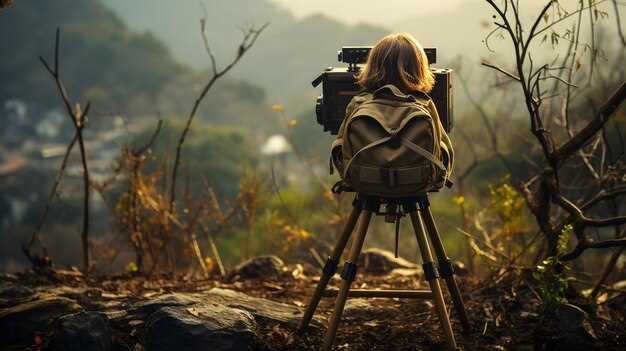
Immerse yourself in the enchanting world of landscape photography, where every click of the shutter unveils a mesmerizing tapestry of nature’s wonders. This captivating art form allows you to capture the essence of the great outdoors, immortalizing its beauty and grandeur through the lens of your camera.
Embark on a visual journey as we delve into the art of composing stunning landscape photographs. Learn how to master the art of visual storytelling, using composition techniques that will elevate your images from ordinary to extraordinary. Discover the secrets behind creating compelling focal points, balancing elements within the frame, and harnessing the power of leading lines to guide the viewer’s gaze.
Equip yourself with the essential gear that will empower you to capture the awe-inspiring landscapes that unfold before your eyes. From sturdy tripods that ensure stability and sharpness to wide-angle lenses that capture the vastness of the scenery, we will guide you through the must-have tools of the trade. Unleash your creativity with filters that enhance colors and add drama to your images, and learn how to make the most of natural light to create breathtaking effects.
Understanding the Significance of Composition in Capturing Breathtaking Landscapes
When it comes to capturing stunning landscapes through the lens of a camera, one cannot underestimate the importance of composition. The way elements are arranged within the frame can make or break a photograph, transforming an ordinary scene into a visually captivating masterpiece. Composition in landscape photography involves the deliberate arrangement of various elements such as lines, shapes, colors, and textures to create a harmonious and visually appealing image.
By understanding the significance of composition, photographers can effectively convey their intended message or evoke specific emotions in their landscape photographs. The careful placement of foreground, middle ground, and background elements can lead the viewer’s eye through the image, creating a sense of depth and guiding them towards the main focal point. Additionally, the use of leading lines, such as roads, rivers, or paths, can draw attention to specific areas of interest within the frame.
Another crucial aspect of composition is the rule of thirds, which involves dividing the frame into a 3×3 grid and placing key elements along the gridlines or at their intersections. This technique helps to create a balanced and visually pleasing composition, as it avoids placing the main subject directly in the center of the frame. By adhering to the rule of thirds, photographers can add a sense of dynamism and visual interest to their landscape photographs.
Furthermore, the use of framing techniques can enhance the composition of landscape photographs. By incorporating natural elements such as trees, arches, or doorways in the foreground, photographers can create a frame within a frame, drawing attention to the main subject and adding depth to the image. This technique not only adds visual interest but also provides a sense of context and scale to the overall composition.
Lastly, the careful consideration of color and contrast is essential in landscape photography composition. The choice of colors and their arrangement within the frame can greatly impact the mood and atmosphere of the photograph. Harmonious color schemes can create a sense of tranquility and serenity, while contrasting colors can evoke energy and excitement. By understanding the interplay of colors and their impact on the composition, photographers can effectively convey the desired emotions and enhance the overall visual impact of their landscape photographs.
- Deliberate arrangement of elements
- Creating depth with foreground, middle ground, and background
- Utilizing leading lines for visual guidance
- Applying the rule of thirds for balanced compositions
- Enhancing composition through framing techniques
- Understanding the impact of color and contrast
By mastering the art of composition in landscape photography, photographers can elevate their work to new heights, capturing breathtaking landscapes that leave a lasting impression on viewers. Understanding the significance of composition and implementing these techniques can transform ordinary scenes into extraordinary visual narratives.
Rule of Thirds: A Key Element in Creating Balanced and Engaging Landscape Shots
The Rule of Thirds is a fundamental principle in photography that can greatly enhance the visual impact of your landscape shots. By dividing the frame into a grid of nine equal parts, the rule suggests placing key elements along the lines or at the intersections, rather than in the center. This technique creates a sense of balance, adds interest, and draws the viewer’s eye into the image.
When applying the Rule of Thirds, consider placing the horizon line along one of the horizontal lines to create a more dynamic composition. This can help emphasize the sky or foreground, depending on the desired effect. Additionally, positioning prominent elements such as trees, mountains, or buildings along the vertical lines can create a stronger visual impact and guide the viewer’s gaze through the image.
While the Rule of Thirds is a valuable guideline, it is important to remember that rules are meant to be broken. Experimenting with different compositions and perspectives can lead to unique and captivating landscape shots. However, understanding and applying the Rule of Thirds can serve as a solid foundation for creating balanced and engaging photographs.
Furthermore, it is essential to consider the use of leading lines, patterns, and points of interest within the frame to complement the Rule of Thirds. Leading lines, such as a winding road or a flowing river, can guide the viewer’s eye and add depth to the image. Patterns, such as rows of trees or waves on a beach, can create a sense of rhythm and visual interest. Including points of interest, such as a lone tree or a person, can provide a focal point and add scale to the landscape.
In conclusion, the Rule of Thirds is a powerful tool in landscape photography that can help create balanced and engaging shots. By strategically placing key elements along the grid lines or intersections, you can enhance the visual impact of your images and create a more dynamic composition. Remember to experiment, break the rules when necessary, and incorporate leading lines, patterns, and points of interest to further enhance your landscape photography skills.
Leading Lines and Perspective: Adding Depth and Interest to Your Landscape Images
Enhancing the visual impact of your landscape photographs goes beyond capturing stunning scenery. By incorporating leading lines and utilizing perspective, you can create images that not only showcase the beauty of the landscape but also draw the viewer’s attention and add depth to your compositions.
Leading lines are elements within a photograph that guide the viewer’s eye towards a specific point of interest. These lines can be natural or man-made, such as roads, rivers, fences, or even the curves of a mountain range. By strategically positioning these lines within your frame, you can create a sense of depth and perspective, leading the viewer’s gaze into the image and towards the focal point.
Perspective, on the other hand, refers to the way objects appear in relation to one another in a photograph. By carefully choosing your vantage point and focal length, you can manipulate perspective to create a sense of scale and dimension in your landscape images. Experimenting with different angles and heights can result in unique compositions that captivate the viewer and make them feel immersed in the scene.
When incorporating leading lines and perspective into your landscape photography, it’s important to consider the overall composition and balance of the image. Pay attention to the placement of the lines and how they interact with other elements in the frame. Additionally, be mindful of the foreground, middle ground, and background, as they all contribute to the overall depth and interest of the photograph.
To enhance the effect of leading lines and perspective, it’s essential to use the right gear. A wide-angle lens is often preferred for landscape photography as it allows you to capture a broader view and exaggerate perspective. Additionally, a tripod can help stabilize your camera and ensure sharp images, especially when shooting in low light conditions or using longer exposures.
| Key Points: |
|---|
| – Incorporate natural or man-made leading lines to guide the viewer’s eye |
| – Experiment with different angles and heights to manipulate perspective |
| – Pay attention to composition and balance in your images |
| – Use a wide-angle lens and tripod for optimal results |
By understanding the power of leading lines and perspective, you can elevate your landscape photography and create images that not only showcase the beauty of the natural world but also engage and captivate viewers. So, grab your gear, explore different compositions, and let your creativity guide you in adding depth and interest to your landscape images.
The Power of Symmetry and Patterns in Landscape Photography
In the realm of capturing the beauty of the natural world through the lens, there is a captivating element that can elevate landscape photography to new heights: the power of symmetry and patterns. By harnessing the inherent balance and repetition found in nature, photographers can create stunning compositions that draw viewers into the scene and evoke a sense of harmony and tranquility.
Discovering Symmetry in Nature
One of the key aspects of utilizing symmetry in landscape photography is the ability to find and recognize it in the environment. Symmetry can be observed in various forms, such as reflections on still bodies of water, the repetition of shapes and lines, or the mirroring of elements in a scene. By actively seeking out these symmetrical opportunities, photographers can add a sense of order and visual impact to their images.
Embracing Patterns for Visual Interest
Patterns, on the other hand, offer a different yet equally compelling way to enhance landscape photography. Whether it’s the rhythmic arrangement of trees in a forest, the undulating waves of a sand dune, or the intricate details of a flower petal, patterns can create a mesmerizing visual experience. By capturing and highlighting these patterns, photographers can create images that captivate viewers and invite them to explore the scene further.
By incorporating symmetry and patterns into their compositions, photographers can transform ordinary landscapes into extraordinary works of art. These elements have the power to create a sense of balance, harmony, and visual interest, making them essential tools in the photographer’s arsenal.
Whether it’s the perfect reflection of a mountain peak in a calm lake or the repeating patterns of a field of flowers, the use of symmetry and patterns in landscape photography can evoke a sense of awe and wonder. It allows photographers to showcase the inherent beauty and order found in nature, inviting viewers to appreciate the world around them in a new and profound way.
So, the next time you venture out into the great outdoors with your camera in hand, keep an eye out for the power of symmetry and patterns. Embrace their potential and let them guide you in creating stunning landscape photographs that leave a lasting impression.
Using Foreground Elements to Create a Sense of Scale and Depth in Your Landscapes
Enhancing the visual impact of your landscape photographs involves more than just capturing a beautiful scene. It requires careful consideration of composition techniques to create a sense of scale and depth. One effective way to achieve this is by incorporating foreground elements into your images. By strategically placing objects or elements in the foreground, you can add a sense of perspective, leading the viewer’s eye into the scene and providing a reference point for the overall scale of the landscape.
Foreground elements can vary depending on the location and subject of your photograph. They can range from natural elements such as rocks, trees, or flowers, to man-made objects like fences, buildings, or even people. The key is to choose elements that complement the overall composition and add visual interest without overpowering the main subject of the landscape.
When selecting foreground elements, consider their size, shape, and texture. Larger objects placed closer to the camera can create a stronger sense of depth, while smaller objects can add intricate details and a sense of scale. Experiment with different angles and perspectives to find the most compelling composition.
Another important aspect to consider is the placement of the foreground elements within the frame. Placing them off-center can create a more dynamic composition and lead the viewer’s eye towards the main subject. Additionally, using leading lines or diagonal elements in the foreground can further enhance the sense of depth and guide the viewer’s gaze into the image.
Foreground elements can also be used to frame the main subject, adding a natural frame within the frame. This technique can help draw attention to the subject and create a more immersive viewing experience. Look for natural arches, branches, or other elements that can be used to frame the landscape and create a sense of depth.
Lastly, don’t be afraid to experiment and get creative with your foreground elements. Try different compositions, perspectives, and focal lengths to see how they affect the overall sense of scale and depth in your landscapes. Remember, the foreground is not just a supporting element but an integral part of the composition that can greatly enhance the visual impact of your photographs.
| Key Points: |
|---|
| – Incorporate foreground elements to create a sense of scale and depth |
| – Choose elements that complement the overall composition |
| – Experiment with different angles, perspectives, and placements |
| – Use leading lines or diagonal elements to guide the viewer’s gaze |
| – Frame the main subject with natural elements for added impact |
| – Be creative and don’t be afraid to try new techniques |
Essential Gear for Landscape Photography: Cameras, Lenses, Tripods, and Filters
When it comes to capturing stunning landscapes, having the right gear is essential. In this section, we will explore the must-have equipment for landscape photography, including cameras, lenses, tripods, and filters. These tools will help you achieve the desired composition and capture the beauty of the natural world.
Cameras
Choosing the right camera is crucial for landscape photography. Look for a camera with a high-resolution sensor to capture fine details and vibrant colors. Full-frame cameras are often preferred for their superior image quality, but APS-C or Micro Four Thirds cameras can also produce excellent results. Consider features like weather sealing and dynamic range to ensure your camera can handle various shooting conditions.
Lenses
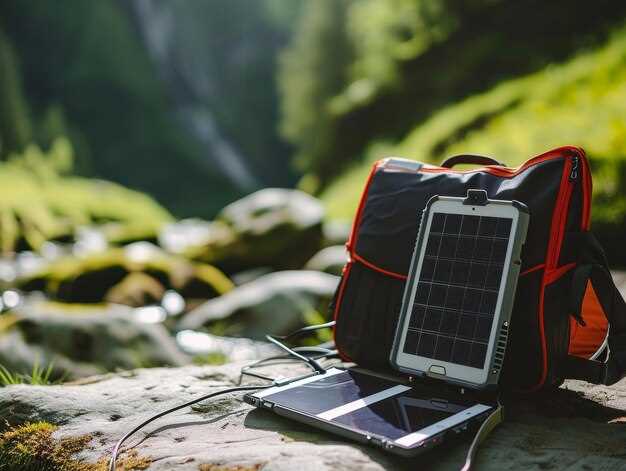
Investing in quality lenses is equally important. Wide-angle lenses are commonly used in landscape photography to capture expansive scenes and create a sense of depth. Look for lenses with a focal length between 14mm and 35mm for optimal results. Additionally, consider lenses with a wide maximum aperture for low-light situations and the ability to use filters.
Prime lenses are often favored for their sharpness and image quality, but zoom lenses can offer versatility in framing your shots. Consider factors like lens distortion and chromatic aberration when selecting your lenses to ensure minimal image imperfections.
Tripods
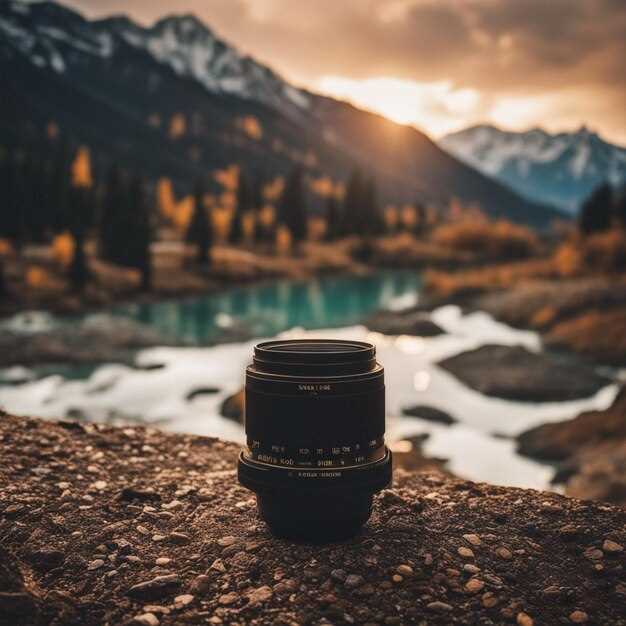
A sturdy tripod is an essential tool for landscape photography. It provides stability and allows for long exposure shots, ensuring sharp images even in low-light conditions. Look for a tripod that is lightweight yet durable, with adjustable legs and a sturdy ball head. Carbon fiber tripods are popular for their lightweight construction, while aluminum tripods offer a more affordable option.
Consider the maximum load capacity of the tripod to ensure it can support your camera and lens combination. Look for features like quick-release plates and adjustable center columns for added convenience and flexibility in positioning your camera.
Filters
Filters can greatly enhance your landscape photography by controlling light and adding creative effects. A polarizing filter is a must-have for reducing glare and enhancing colors, especially when photographing bodies of water or foliage. Neutral density (ND) filters are useful for achieving long exposure effects, such as capturing smooth waterfalls or streaking clouds.
Graduated neutral density (GND) filters are handy for balancing exposure between the sky and the foreground, particularly during sunrise or sunset. Consider investing in a filter holder system that allows for easy attachment and stacking of multiple filters.
By equipping yourself with the right cameras, lenses, tripods, and filters, you will be well-prepared to capture stunning landscapes and create breathtaking compositions. Remember to choose gear that suits your specific needs and preferences, and always practice and experiment to refine your skills as a landscape photographer.





